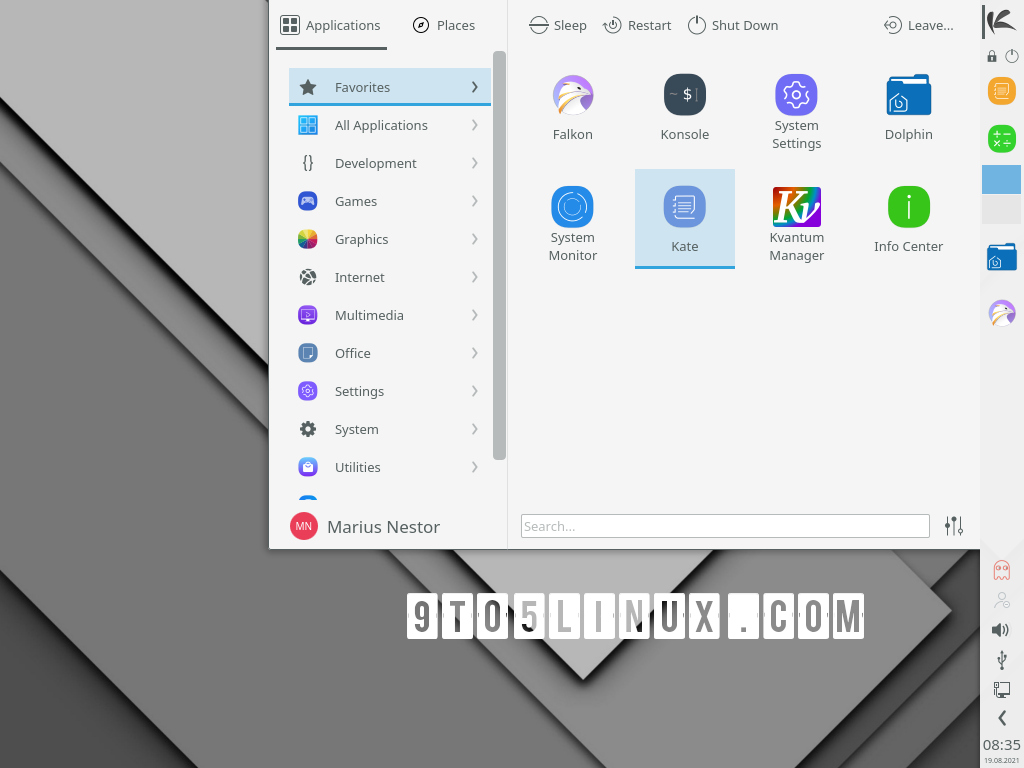
To avoid this you can use the update-desktop-database command. Categories: This value should be terminated by a semi-colon “ ” because it holds a list. The list holds categories that the application may be listed under in menus.Įach time you modify your live desktop file-the one in “~/.local/share/applications” or “/usr/share/applications/”-you’ll need to log out and in again to see what effect your changes have made.Type: For regular applications, this will always be “Application.”.Terminal: Indicates whether the application runs in a terminal window.This icon is used in application search results and when the application is added to the dock or other launcher. It’s the working directory of the application at launch time. Path: This is the path to the directory that the application will be launched from.
#Desktop cleaner applications linux full#
Exec: This may be the name of the executable, or the full path to the executable, including the name of the executable.Version: The version of the desktop file specification to which this file conforms.Comment: This is intended to provide additional information to supplement the “Name” and “GenericName” key-value pairs.If there is a generic term that applies such as web browser, IDE, or word processor, you could use that. GenericName: A general description of the type of application this is.It is also the text that will be used in tooltips. This will be shown beneath the application icon when it is displayed in the desktop environment. Name: The full title of the application, not the name of the executable.Even if the file was misnamed and did not have a “.desktop” extension, it ought to be recognized and handled as a desktop file. : This line identifies the file as a desktop file.You need to correct whatever it is that is preventing the application from launching before you even think about adding another layer of abstraction by way of a desktop file. If the application doesn’t run, then no matter what you put in your desktop file it still won’t run. You can go ahead and make your desktop file. Open a terminal window, and launch the application. “Type” is the key and “Application” is the value.īefore you start, make sure the application runs. Key-Value Pairs: Settings are entered by providing values to named elements, or “keys.” For example, Type=Application is a key-value pair.They are used to group together related sets of key-value pairs. Group Headers: Group headers act as section titles.Comments: Comments start with a hash “ #“.They are given the same name as the application they represent, and by convention have a “.desktop” extension.ĭesktop files may contain comments, group headers, and key-value pairs. They can be created using any text editor. Try not to touch anything other than in your /home directory.A desktop file is a plain text file. Now you can review the large files and manually remove them using a file manager. Snap list -all | awk '/disabled/ + | sort -hr | head -20įor example, the following command searches and gives you the first 20 large files in the root directory “/”. Then give it executable permission using chmod +x clean_snap.sh command and run via. You can use the following script to clean up some of the disabled snap runtimes.Ĭopy this entire script to a new file and name it clean_snap.sh: And over time, Snap accumulates irrelevant runtimes and files. If you use Ubuntu, there is a high chance that you are using Snap packages. flatpak uninstall -unusedįor more information and wants to read details about it, refer to this article. The most straightforward way to remove some unused Flatpak is the below command.


Although the runtime can be shared between related apps, many unused leftover runtimes may consume your disk space. Distribute your desktop Linux application in the AppImage format and win users running all common Linux distributions. Because by design, the Flatpak executable combines the runtime. Another problem is if you add to many application - you may be confused and spend extra time for search. The only problem might be the number of the apps you can add to the panel. You can start any application or script by a single mouse click. Flatpak applications and runtime take significant disk space. The fastest way in Linux Mint to open new application is by using: Panel Launchers.


 0 kommentar(er)
0 kommentar(er)
